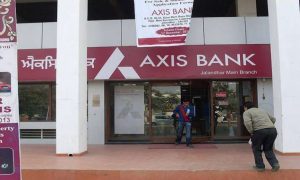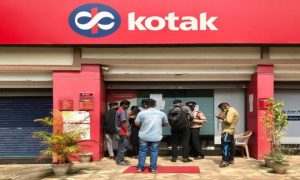Currently, only Delhi, Mumbai, Kolkata, and Chennai are classified as metro cities for the purpose of HRA calculation.
The budget season is here and one thing that comes with it are expectations of tax relief from salaried individuals and this year is no different.
Read More:- Akasa Air announces pay day sale, up to 20% discount on airfares, Check details here
Finance Minister Nirmala Sitharman is set to present her seventh budget with salaried individuals expecting tax relief as they are always on the lookout for measures that can ease their financial burdens.
Budget 2024 expectations centre around income slabs, tax rates, and increased deductions.
However, there are specific areas where changes can bring significant tax advantages for the working class. One such area is the exemption for house rent allowance (HRA) under the old tax regime, which can benefit employed taxpayers.
What is HRA Tax Exemption?
Many employers include an HRA as part of their employees’ compensation. If an employee receiving HRA is paying rent for their accommodation, they can claim a tax exemption on HRA.
It’s important to note that the tax exemption amount can vary based on whether the employee lives in a metro city or not for tax purposes.
House Rent Allowance (HRA) is a tax benefit available to salaried individuals who reside in rented housing. The HRA exemption is determined by considering the actual rent paid, the basic salary of the individual, and the location of the residence.
Why should more cities be included in HRA exemption?
At present, a rented house in Delhi, Mumbai, Kolkata, and Chennai qualifies for a 50% exemption from HRA, while those located in other places come under the 40% bracket. It is worth mentioning that this categorisation was done more than three decades ago.
Also Read– Are you claiming false HRA while filing ITR? This is how much it can cost you
Over time, cities have grown in population and economy, creating a need to reassess how we classify metro and non-metro cities.
The Constitution (Seventy-fourth Amendment) Act, 1992, designates the National Capital Region (NCR), Mumbai, Kolkata, Bangalore, Pune, Hyderabad, and Chennai as metro cities.
However, considering overall development (demographics, infrastructure, industrial, economic factors, etc.), the list of metro cities could be longer, possibly including cities like Ahmedabad, Surat, Kanpur, and others. The HRA tax exemption for salaried individuals in these cities remains lower at 40% because the tax laws have not been updated to reflect the current times.
Living outside metro cities can mean paying a higher percentage of your income in taxes. For example, a person living in Bengaluru might pay higher average rent than someone in Kolkata or Chennai, which are considered metro cities for tax purposes.
Also Read– Budget 2024: Will Middle Class Be Spared From 30% Tax Rate? Check What PHCCI Has Recommended To FM
People living in rapidly growing non-metro cities, as classified by the Income-tax Act, may face higher rents due to fast urbanisation. They also receive lower tax benefits for house rent compared to metro cities. As more people move to these non-metro cities for work, the government should reconsider the rules for claiming rent exemptions to ease the financial burden on taxpayers.
“The Indian constitution recognises Bengaluru as a metro city among other cities, such as Delhi NCR, Mumbai, Kolkata, Pune, Hyderabad, and Chennai. However, per the income tax provisions, only four cities in India (Delhi, Mumbai, Chennai, and Kolkata) are considered metro cities and allowed to have 50% of the basic salary as the House Rent Allowance (HRA) and 40% of the basic salary for non-metro cities (other cities). Being one of the world’s fastest-growing cities, Bengaluru offers employment to many. There is an increase in the cost of living in the city compared with other cities. Hence, employees should get a 50% HRA deduction,” Divya Baweja, Partner, Deloitte India said as quoted by The Economic Times.
It’s long overdue to include Bengaluru, Pune, Hyderabad, and Ahmedabad as metros for HRA calculation since their rental landscapes are similar to those of current metro cities.
Also Read : ITR Filing 2024: Seven Types Of ITR Forms Suitable For Various Taxpayers
However, it’s important to take a more detailed approach for HRA deduction, especially when considering the different property rental rates across cities. Mumbai and Delhi stand out with high rental rates.
What is HRA (House Rent Allowance)?
An employer gives a house rent allowance as a subsidy for an employee’s rented accommodation. You can still use this exemption even if you work for yourself or your company does not provide an HRA. But the catch is that the house rent allowance is exempted from tax only if you live in a rented house.
Calculating HRA and HRA Tax Exemption
As per Kotak Life website, here are the factors taken into consideration for calculating HRA:
Read More: Gold Rate Increases In India: Check 24 Carat Rate In Your City On June 29
- Actual HRA Received: This is the amount of HRA the employee receives from their employer.
- Rent Paid: The actual rent the employee pays for the accommodation they are residing in. It includes the basic rent and other additional charges like maintenance but excludes charges like electricity, water, or other amenities.
- Salary: The employee’s salary includes basic salary, dearness allowance (if any), and other fixed pay components.
- Location of Residence: HRA is related to the city or town where the employee’s rented accommodation is located. Different cities are categorised into different classes (e.g., metros, non-metros) with different HRA exemption limits.





































